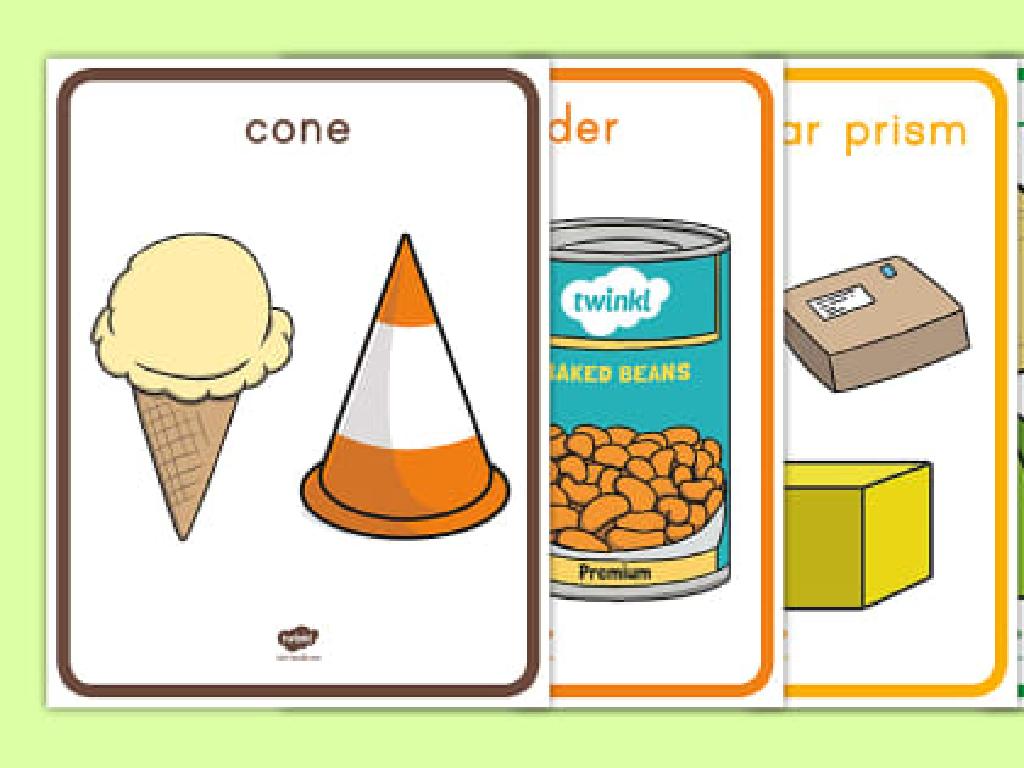Divide By Decimals
Subject: Math
Grade: Fifth grade
Topic: Divide Decimals
Please LOG IN to download the presentation. Access is available to registered users only.
View More Content
Introduction to Dividing by Decimals
– Grasping the concept of decimals
– Decimals represent parts of a whole, like 0.5 is half
– Understanding division
– Division is sharing or grouping equally
– Significance of dividing by decimals
– It’s crucial for real-world problems, like money transactions
– Practical applications
|
This slide introduces the concept of dividing by decimals, which is a fundamental skill in mathematics, especially important for real-life applications such as financial literacy. Begin by ensuring students have a solid understanding of what decimals are and how they represent fractions of a whole. Then, explain the concept of division as the process of splitting a number into equal parts. Emphasize the importance of learning to divide by decimals for solving everyday problems, such as dividing money or measuring ingredients in cooking. Provide examples to illustrate these points and prepare students for practical exercises to follow.
Review: Division and Decimals
– Recap: Division basics
– Division is sharing equally among groups.
– Recap: Understanding decimals
– Decimals represent fractions of a whole.
– Simple division with decimals
– Divide numbers like 4.5 ÷ 1.5 to find how many times one fits into another.
– Practice problem examples
– Example: How many 0.5 cups in 2.5 cups of flour?
|
This slide is a refresher on the fundamental concepts of division and decimals for fifth-grade students. Start by revisiting the basic idea of division as a method of distributing items evenly into groups. Then, explain decimals as numbers that are not whole, representing parts of a whole, similar to fractions. Provide simple division problems involving decimals to illustrate how division works when dealing with decimal numbers. Conclude with practice problems to solidify their understanding, ensuring to demonstrate step-by-step solutions. Encourage students to think of real-life situations where they might need to divide with decimals, such as measuring ingredients in cooking.
Dividing Whole Numbers by Decimals
– Placing the decimal in division
– Move the decimal point to make divisor a whole number.
– Example: Divide a number by a decimal
– 12 ÷ 0.3: Move decimal of 0.3 to get 3, also move decimal in 12 the same number of places.
– Practice: 25 ÷ 0.5
– What is 25 divided by 0.5? Use the steps we’ve learned.
|
This slide introduces students to the concept of dividing whole numbers by decimals. Start by explaining the importance of correctly placing the decimal point in the quotient. Demonstrate with an example by dividing a whole number by a decimal, ensuring to show the step where both the divisor and dividend’s decimal points are moved the same number of places to the right to make the divisor a whole number. Provide a practice problem for the students to solve, such as dividing 25 by 0.5, and guide them through the process. Encourage students to explain their reasoning and the steps they take to solve the problem. This will help solidify their understanding of the concept.
Dividing Decimals by Whole Numbers
– Review long division steps
– Example: Decimal divided by whole
– For instance, 12.4 ÷ 2. How do we solve it?
– Practice: 3.6 ÷ 4
– Let’s solve 3.6 ÷ 4 together
– Discuss the quotient
– Understand how to interpret the result
|
Begin with a quick review of the long division process, ensuring that students recall each step. Then, introduce an example of dividing a decimal by a whole number, such as 12.4 ÷ 2, and solve it step by step on the board. Next, present the practice problem 3.6 ÷ 4 and work through it as a class, encouraging students to participate in finding the quotient. Emphasize the importance of placing the decimal point in the correct position in the answer. Conclude by discussing how to interpret the result and its real-world applications, such as dividing a sum of money or a measurement evenly. This will help students understand the practical use of dividing decimals by whole numbers.
Dividing Decimals by Decimals
– Shift the decimal point
– Move the decimal in divisor to the right end; do the same for the dividend.
– Example: Decimal division
– Divide 3.6 by 1.2. Shift the decimal to make 12 ÷ 36, then place decimal in the quotient.
– Practice: 2.75 ÷ 0.5
– Apply the shifting rule and solve the problem. What is the result?
|
This slide introduces the concept of dividing decimals by decimals. Emphasize the importance of moving the decimal point to the right in both the divisor and dividend to convert the problem into a whole number division. Use the example to show step-by-step how to shift the decimal and solve the problem. For the practice problem, guide students through the process, ensuring they understand how to shift the decimal point and then perform the division as they would with whole numbers. After solving, remind them to place the decimal point in the correct position in their answer. This exercise will help solidify their understanding of decimal division.
Tips and Tricks for Decimal Division
– Align decimal points
– Ensure decimals are in a straight line vertically before dividing
– Check work with multiplication
– After dividing, multiply to see if you get the original number
– Use estimation for verification
– Estimate the answer first to check if the actual answer is reasonable
– Practice with examples
|
When teaching decimal division, it’s crucial to emphasize the importance of aligning decimal points to avoid calculation errors. Students should also learn to check their work by multiplying the quotient by the divisor to see if it equals the dividend. Estimation is a valuable skill to quickly verify if an answer is in the right ballpark, which can be particularly helpful during tests. Provide students with ample practice problems to apply these tips and reinforce their understanding. Encourage them to explain their reasoning and how they used each tip in solving the problems.
Class Activity: Decimal Division Challenge
– Pair up and solve problems together
– Share your answers with the class
– Discuss the methods you used
– Did you estimate, use long division, or another strategy?
– Reflect on different solving strategies
– Think about how different approaches can lead to the same answer.
|
This activity is designed to promote collaborative learning and discussion among students. By working in pairs, students can help each other understand the process of dividing by decimals and learn from each other’s problem-solving methods. After solving the problems, each pair will share their solutions with the class, providing an opportunity for students to communicate their mathematical thinking. The group discussion will allow students to explore and reflect on the variety of methods used, such as estimation or long division, and understand that different approaches can be valid. As a teacher, facilitate the discussion by asking guiding questions and ensure that each student is engaged and contributing to the conversation. Prepare 4-5 different sets of decimal division problems so that students can have a variety of examples to work on and discuss.
Wrapping Up: Division by Decimals
– Recap today’s decimal division
– Practice makes perfect
– Homework: Decimal Worksheet
– Complete the provided worksheet to practice dividing by decimals.
– Bring questions next class
– Review your work and note any difficulties to discuss.
|
As we conclude today’s lesson on dividing by decimals, it’s crucial to emphasize the importance of practice in mastering this skill. The homework assignment involves a worksheet that covers various decimal division problems, reinforcing the concepts taught in class. Encourage students to attempt all problems and remind them that making mistakes is a part of the learning process. They should come to the next class prepared to ask questions about any challenges they faced. This will help them gain a deeper understanding and become more confident in their ability to divide by decimals.






